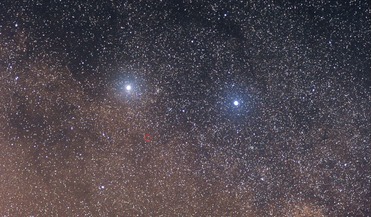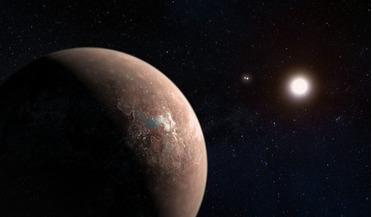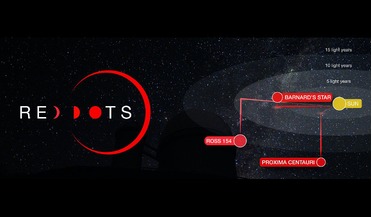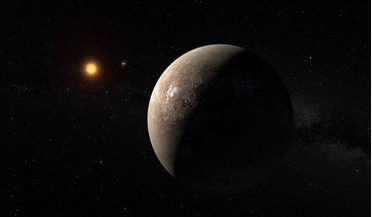 15 February 2021
Possible planet found in habitable zone around Alpha Centauri
15 February 2021
Possible planet found in habitable zone around Alpha Centauri
... two sun-like stars, Alpha Cen A & B, and a smaller red dwarf star called Proxima Centauri. Proxima Centauri is already famous for harbouring a a rocky planet – Proxima b – not much bigger than the Earth; a significant finding uncovered by scientists...
 19 November 2021
New mission to search for habitable planets close to Earth announced
19 November 2021
New mission to search for habitable planets close to Earth announced
... issue and the scientific community have remained divided as to whether or not life could exist here. But, Proxima Centauri is not the only possible star that might be hiding an exoplanet. This red dwarf is one of three stars...
 23 June 2017
Will our next nearest exoplanet be found soon?
23 June 2017
Will our next nearest exoplanet be found soon?
...an Earth-like exoplanet around the closest star to us, Proxima Centauri. It was met with great success as within the habitable...taken place. This time however, observational data from Proxima Centauri will be revealed, analysed and discussed in real ...
 28 August 2016
How habitable is Proxima b?
28 August 2016
How habitable is Proxima b?
After the announcement on Wednesday that an Earth-Sized planet around Proxima Centauri has been found, a flurry of research papers have been released speculating on everything from the planets habitability ...
 August 2018
Flying to the stars
August 2018
Flying to the stars
... on this scale. Still, the closest star to our Sun, Proxima Centauri, would be more than 265 km away. At this scale,... velocity of 17 km/s; at this velocity, a flight to Proxima Centauri would take about 75,000 years. This timescale sounds hopeless but...
 November 2018
How many people does it take to colonise an exoplanet?
November 2018
How many people does it take to colonise an exoplanet?
... 200 km/s by taking advantage of the enormous gravitational pull of the Sun. But even this translates to a travel time to Proxima Centauri of over 6,000 years. Such a mission would be unlike anything ever attempted in human history. While faster-than...